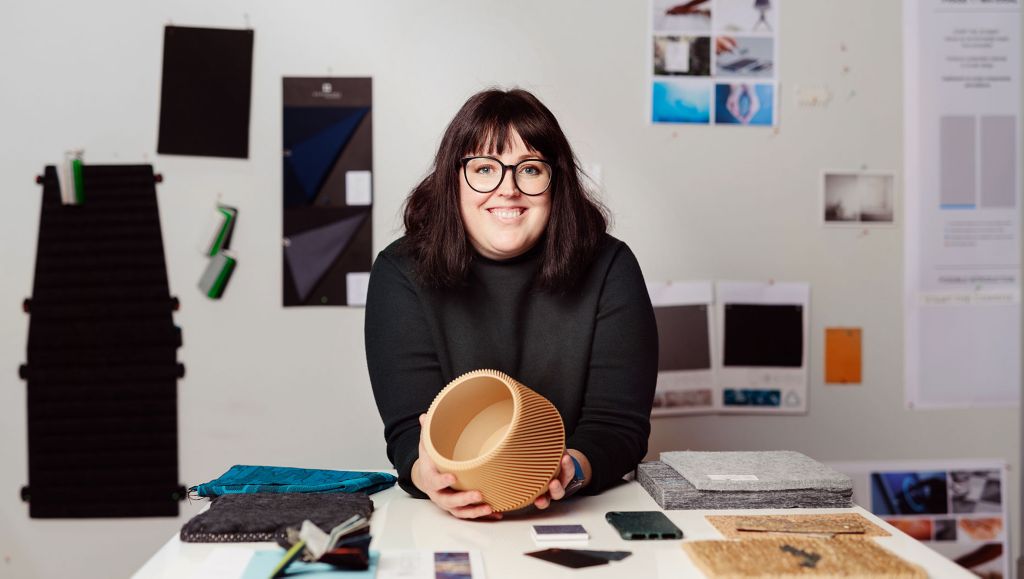Meet Linnéa Nilsson: “My vision is that everything in our products can be recycled"


On a large worktable, mood boards are mixed with fabric and plastic samples in all possible colours and materials. It is here, on the second floor of the Volvo Group's design studio, that the company's buses, trucks and construction machinery take on their character.
In close collaboration with surface material engineers, the design team works with all visible surfaces – both exterior and interior – in the Volvo Group's products. Linnéa Nilsson also works strategically with design and material selection for the longer term.
When it comes to diesel vehicles, it is the use of the product itself that accounts for its biggest environmental impact. However, as more and more vehicles become fossil fuel-free, the production and choice of materials used in the vehicle will become more important for its total footprint.
“We are in the midst of a very exciting transition. Which fabrics, plastics, and other surface materials we choose to use, suddenly play a much bigger role. This is a journey that the entire industry must make. For us as designers, this means that we must question everything we do and have done before,” says Linnéa Nilsson.
For a company like Volvo Group, the challenges are greater than those faced by companies who work with passenger cars.
“Our vehicles are often very complex and place completely different demands on materials in different components. A truck or a construction machine that is used in a mine, for example, is exposed to completely different forms of wear and tear than a car,” she says.
She describes the design team’s work as a journey in three steps. The first phase is about replacing traditional materials with more sustainable alternatives – this is something that can be done now.
“One of the areas we work with is textiles made from recycled plastic. The textile industry has come a long way if you compare it with many other material areas. A lot is also happening with recycled plastics as demand sharply increases. The issue of sustainability is often in focus in our conversations with suppliers,” says Linnéa Nilsson.
Her vision is to have completely circular products where all materials are recycled and renewable.
“For me, circularity is about extending the life of our products and ensuring that we use the resources in the best and most efficient way possible. Part of this is to take responsibility for the materials we choose to use and ensure that they later on can have a new life.”
Between what can be done today and in the future, there is a phase that Linnea Nilsson thinks is the most interesting of all.
“What can we do differently to take us in the right direction? For us to be truly sustainable, we must rethink and find smart solutions – it is not enough to replace a few things,” she says.
And while some choices are easy to make – such as replacing a traditional textile with one made from recycled materials – others are not as obvious. An example is fossil-free bio-based plastic that can be made from, among other things, sugar cane and corn.
“If we are to use this type of material, we need to know that it gives the right results and that it does not compete with food production, for example. This is just one of many areas where we need more information to know what the best choice is long-term. A lot will surely happen in the coming years. But at the same time, we cannot wait for all the answers. We have to start now and learn as we go along.”
Linnéa Nilsson
Title: Senior CMF Designer Research Lead
Age: 39
Background: Trained textile designer and product designer with a PhD in design. She has worked at Semcon, Volvo Cars and at the Swedish School of Textiles in Borås, Sweden.
Years at Volvo Group: 4
This drives me: Circular design